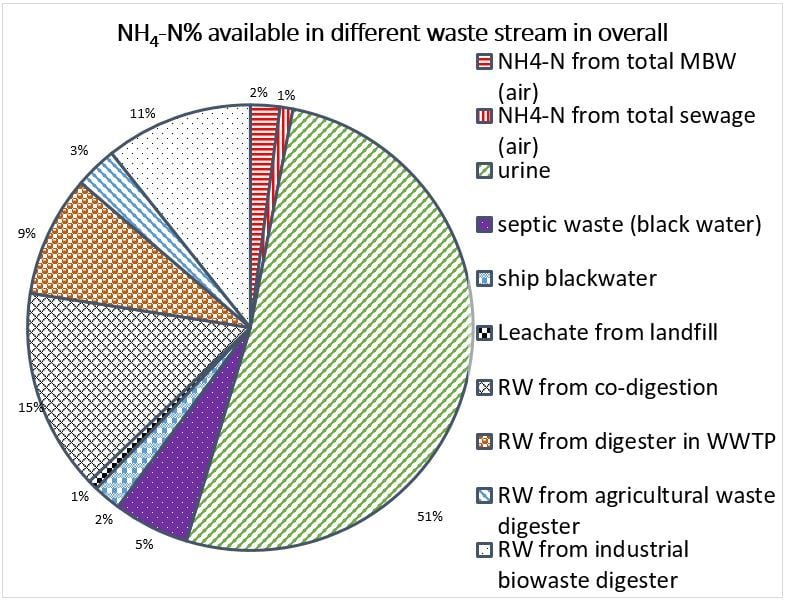Nitrogen availability

Figure 1. NH4-N % available in a different waste stream in Finland (calculated as % of NH4-N tons). NH4-N in total sewage, MBW (municipal bio waste), urine and septic waste was calculated based on raw material available. NH4-N in MBW and sewage was calculated as NH4-N in the air of tunnel compost. Urine was calculated by total Finnish population. Septic waste (only black water i.e. 10L black water/day) was calculated from 18% of the Finnish population.
Potential of recycleble N in Finland
There are several types of waste which can be recycled after major or minor treatment. Cattle manure and compost from organic waste has been reused for several decades but there are other waste streams which are not easily acceptable to use in agriculture. Reuse of N and P from the recyclable waste can be enough to fertilize Finland if managed properly. For example, P content in Finnish cattle manure is enough to fertilize Finnish arable land if spread evenly (Ylivainio et al. 2014). Similarly, the recycling of N in the different waste stream can fulfill the half of the N requirement in Finland (N required in Finland is 300 thousand tons/year). N and P in urine from Finnish population alone can fertilize 73 thousand ha or 3.7% of arable land (150 kgN/ha) and can produce 185 thousand metric tons of barley (calculated as 3.8 M tons/ha (vyr.fi)). This study is mainly focusing on N and P in the liquid fraction of waste or which is extracted in liquid, but there is a big amount of nutrients in the solid fraction of the waste which can be recycled in agriculture.